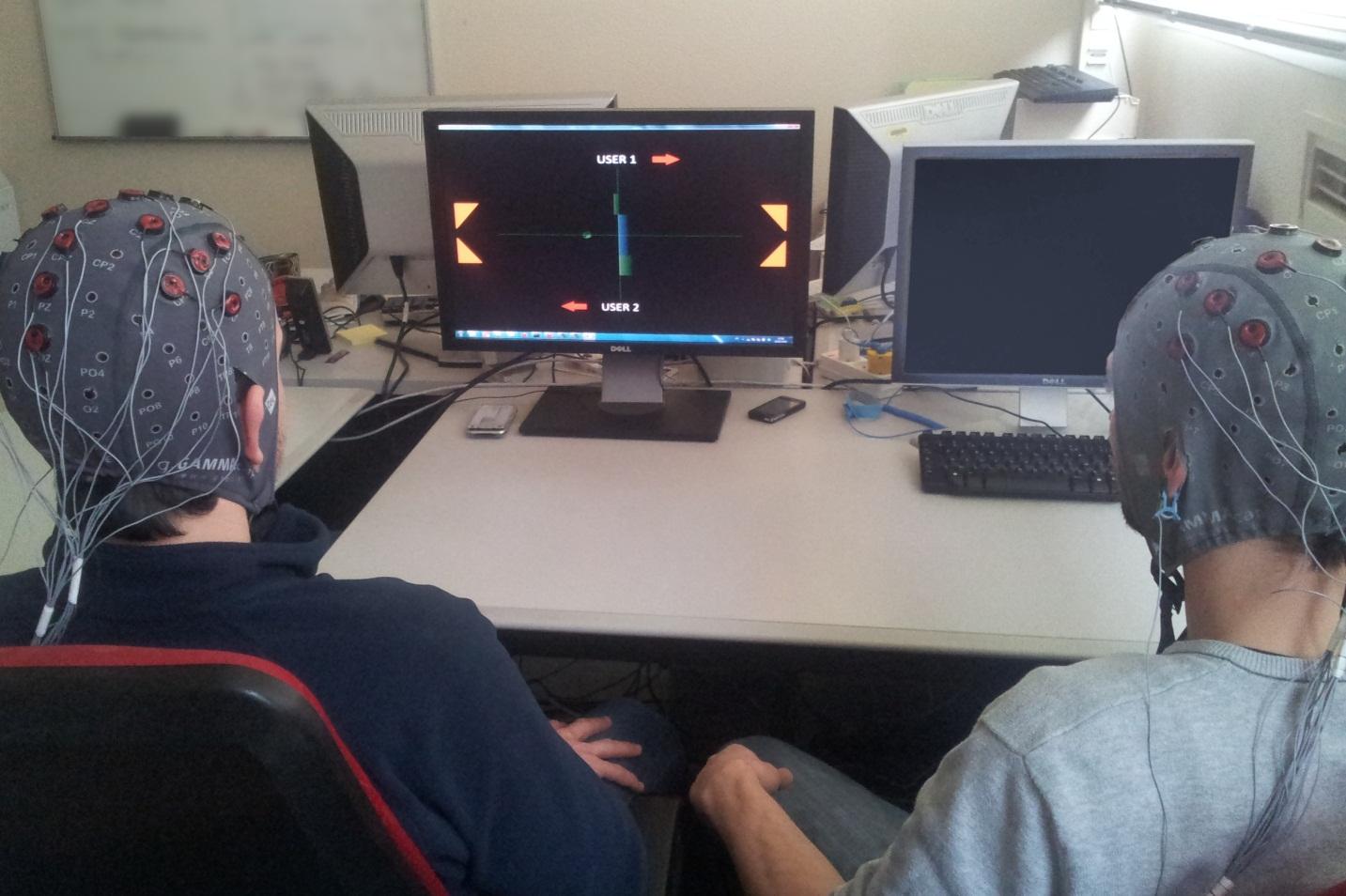Section: New Results
Training Approaches for Brain-Computer Interfaces
Participants : Fabien Lotte, Florian Larrue, Christian Mühl.
While recent research on Brain-Computer Interfaces (BCI) has highlighted their potential for many applications, they remain barely used outside laboratories due to a lack of robustness. Spontaneous BCI (i.e., mental imagery-based BCI) often rely on mutual learning efforts by the user and the machine, with BCI users learning to produce stable EEG patterns (spontaneous BCI control being widely acknowledged as a skill) while the computer learns to automatically recognize these EEG patterns, using signal processing. Most research so far was focused on signal processing, mostly neglecting the human in the loop. However, how well the user masters the BCI skill is also a key element explaining BCI robustness. Unfortunately, despite the importance of BCI training protocols, they have been scarcely studied so far, and used mostly unchanged for years. In our work, we advocate that current human training approaches for spontaneous BCI are most likely inappropriate. We notably studied instructional design literature in order to identify the key requirements and guidelines for a successful training procedure that promotes a good and efficient skill learning. This literature study highlighted that current spontaneous BCI user training procedures satisfy very few of these requirements and hence are likely to be suboptimal. We therefore identified the flaws in BCI training protocols according to instructional design principles. We also proposed new research directions that are theoretically expected to address some of these flaws and to help users learn the BCI skill more efficiently. This work has been published in the Frontiers in Neuroscience journal [9] .
|
On a related topic, together with colleagues from Inria Rennes (A. Lécuyer and L. Bonnet, Hybrid team) we explored the design and evaluation of multiuser BCI applications, notably to see their impact on user training and performance. We created a multiuser videogame called BrainArena in which two users can play a simple football game by means of two BCIs. They can score goals on the left or right side of the screen by simply imagining left or right hand movements (see Figure 8 ). To add another interesting element, the gamers can play in a collaborative manner (their two mental activities are combined to score in the same goal), or in a competitive manner (the gamers must push the ball in opposite directions). Interestingly enough, our results showed that compared to a single player version of the same BCI-game, collaborative multiplayer BCI-gaming increased the motivation and performance of the most skilled of each player pairs, while leaving the performance of the other players unchanged, hence proving a useful tool to improve BCI training. This work has been published in the IEEE Transactions on Computational Intelligence and AI in Games journal [5] .



